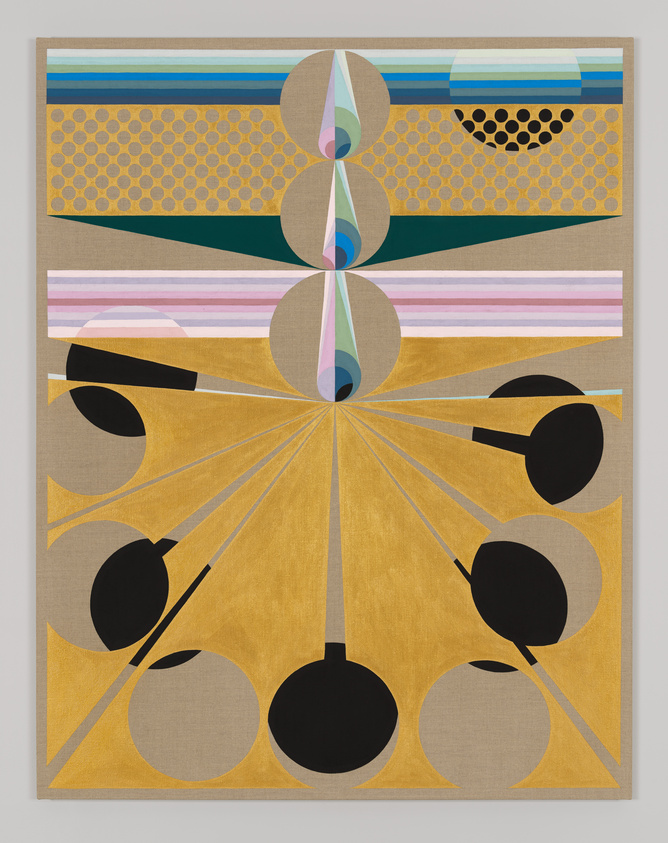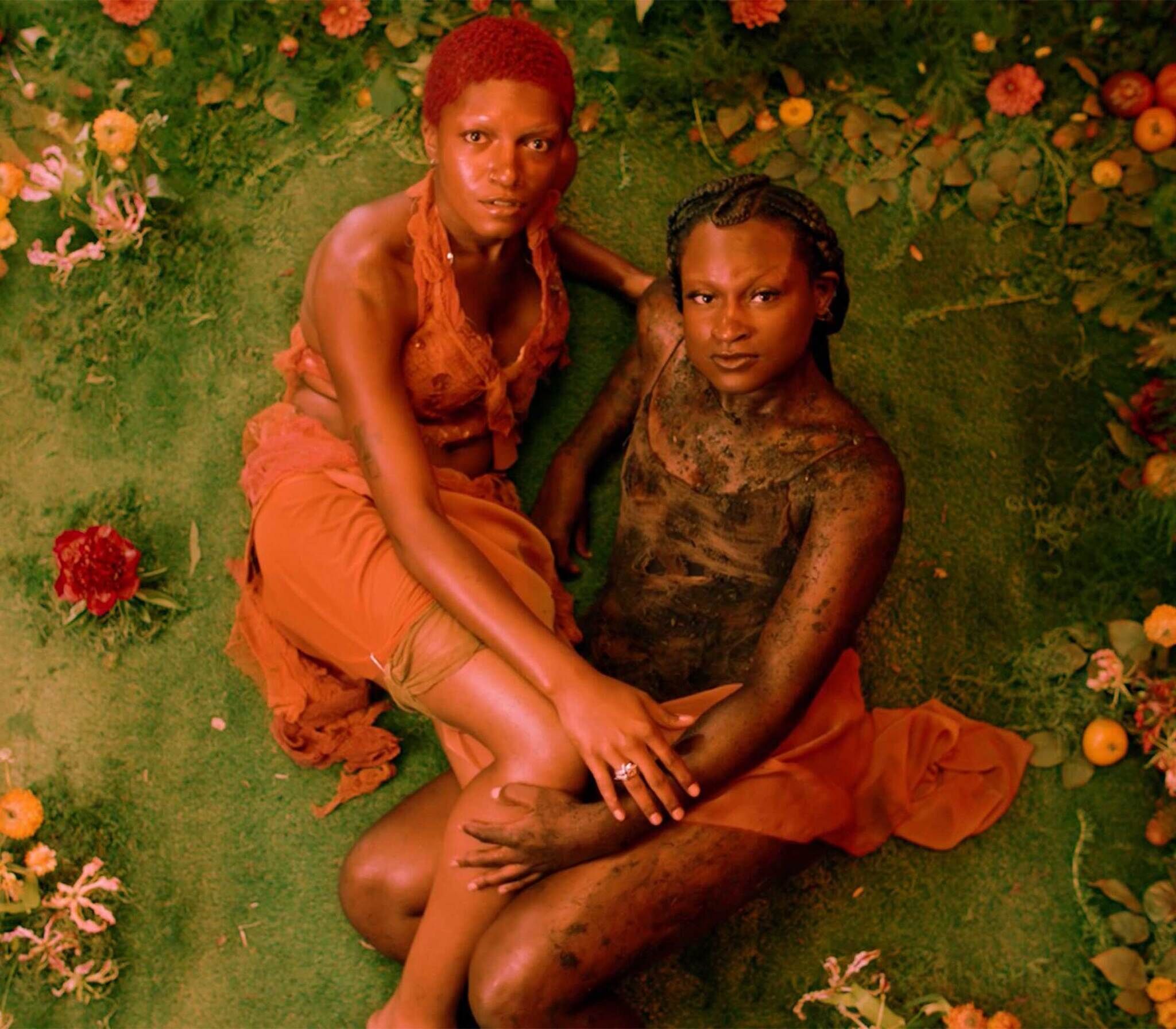Minisode: Eamon Ore-Giron on his 2024 Whitney Biennial Artworks
May 2, 2024
0:00
Minisode: Eamon Ore-Giron on his 2024 Whitney Biennial Artworks
0:00
Narrator:
Welcome to Artists Among Us Minisodes from the Whitney Museum of American Art. For us, this spring and summer are all about the 2024 Whitney Biennial. The Biennial is the longest-running survey of contemporary art in the United States and takes place here at the Whitney every two years. For over ninety years Biennial curators have traveled far and wide to bring together artists whose distinct and varied voices probe some of the most pressing issues of the current moment. Over the course of the 2024 Biennial, we’ll be sitting down with some of the artists to talk about their art and what it means to be making art now.
Today we hear from Eamon Ore-Giron who talks about two of the three artworks he has in the Biennial. The paintings are part of a series titled Talking Shit in which he reimagines deities from ancient Peruvian and Mexican cultures in a contemporary context to explore the idea of a living ancestral past. Here is Eamon Ore-Giron.
Eamon Ore-Giron:
My name is Eamon Ore-Giron. I'm an artist who lives in Los Angeles, California. The works are focused on deities from the Americas, primarily, right now, Mexico and Peru. This piece is called Talking Shit with Viracocha's Rainbow (Iteration I). And it is made up of essentially a two-headed serpent. So if you follow on the upper left, the head of the serpent is facing outward and the body coils around the canvas and makes its way down to the bottom, comes up again, does a little tumble down, and then comes back up to reveal another head facing the opposite direction.
The title Talking Shit for me was a way to bring the ideas of sacred symbology and mythology closer, like a way of bringing it closer to my life. This body of work deals with the ways in which these ancient symbols and deities have been interpreted and their meanings have kind of evolved over time depending on the context. I read a quote in a book called The Stone and the Thread and it's about the roots of abstraction in the Andes. There's a really beautiful quote, it's by Octavio Paz, who's a Mexican writer.
Narrator:
Octavio Paz wrote about Mexican identity in the twentieth century by interpreting Indigenous artworks. In doing so, he pointedly critiqued how Spanish colonizers had misunderstood the art, languages, and beliefs native to the area.
Eamon Ore-Giron:
And he's talking about a goddess, Coatlicue, which is an Aztec goddess and two-headed serpent that wears a skirt made out of a splayed body and snakes. It's a really powerful symbol. And he talks about how the statue of Coatlicue was at first considered an abomination and was reburied into the ground and then it was rediscovered during the Colonial era and then placed in a convent with a sheet over it because everybody was afraid of it. And then in the Modern era, it was brought out and now is the crown jewel in the collection of the Museum of Anthropology in Mexico City. I really loved that illustration of how symbols can change through time and the collective experience that we have allows for that evolution and mutation. So for me, the Talking Shit series was a way to explore my own ancestral past and connect it to my life now with a lot of room for me to interpret these forms.
Viracocha is the god of creation in the Andes. And Viracocha is also known as teacher of the earth and then the other more vertical painting is an amaru, a version of an amaru, which is a mythological creature from the Andes. The amaru was born from the rainbow that Viracocha created. It was born from the chest of the rainbow. And so to me, it's really cool that these two pieces are existing together in the exhibition because they're related in that way.
The first forms in the series are pulled from sculptures in the pantheon, the Aztec pantheon, because I started the series when I was living in Mexico. But I've moved the body of work into exploring more of the Andean mythologies. And in the Andean mythologies, it's a little bit more difficult to find specific examples of certain deities. There's a lot more room for my interpretation and my understanding of how I want to create this creature.
One thing that stands out when I think about this bringing the sacred closer in some way is in Peru near my cousin's house there's a pyramid there, they call them huacas. And just as if it was just a crumbling building in the middle of a neighborhood. They're all over Lima. And actually a lot of the archeological objects that are in museums now come from these huacas that have been looted. To me, it's like the past still is here. And so for me, the “talking shit” element to the series is me literally looking at the form and imagining the form in my own way and maybe digging into my own past in my own neurological pathway, in my imagination, but also thinking about our current relationship with the past—especially in Latin America—is very present. It's all around us. And sometimes that's a good thing and sometimes it's not a great thing, but it’s a way for me to make that intimate, to draw it in closer, and to think about these forms.
Narrator:
Artists Among Us Minisodes are produced at the Whitney Museum of American Art by Anne Byrd, Nora Gomez-Strauss, Kyla Mathis-Angress, Sascha Peterfreund, Emma Quaytman, and Emily Stoller-Patterson.
This spring and summer we’ll be sitting down with 2024 Whitney Biennial artists to talk about their work and what it means to be making art in the present unfolding moment. In this minisode, we hear from Eamon Ore-Giron about his series, Talking Shit, in which he reimagines deities from ancient Peruvian and Mexican cultures in a contemporary context to explore the idea of a living ancestral past.


